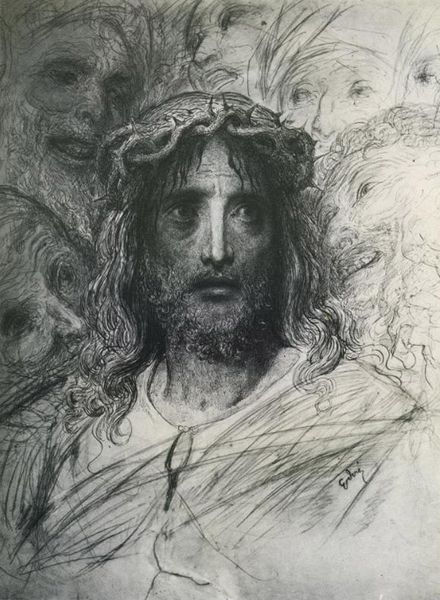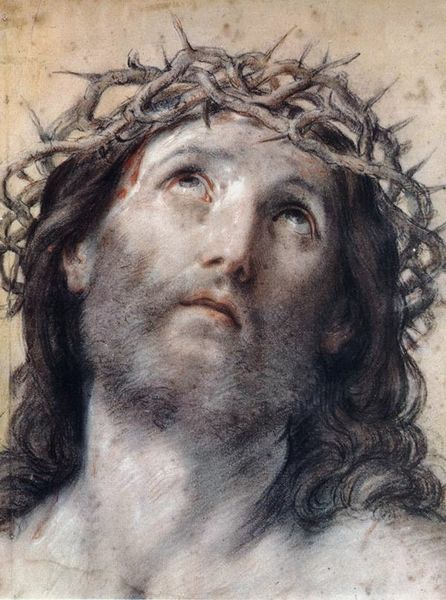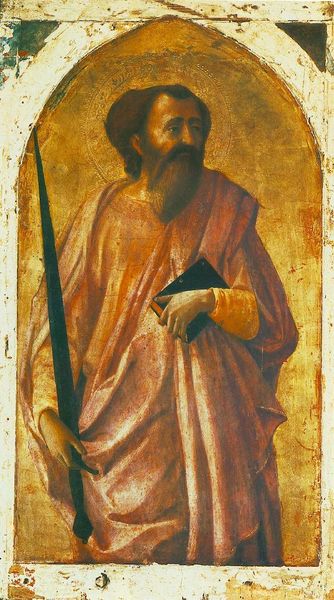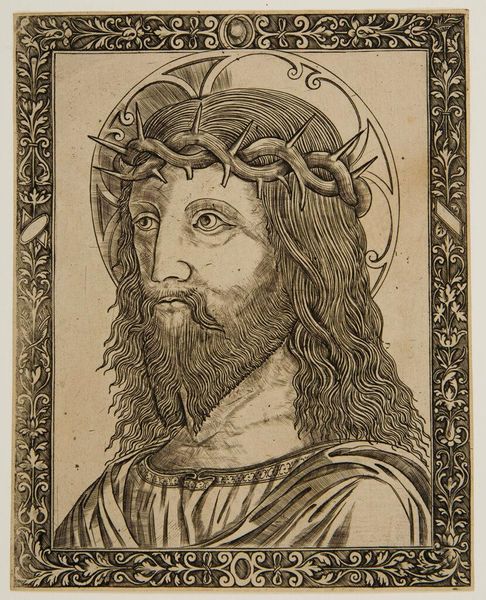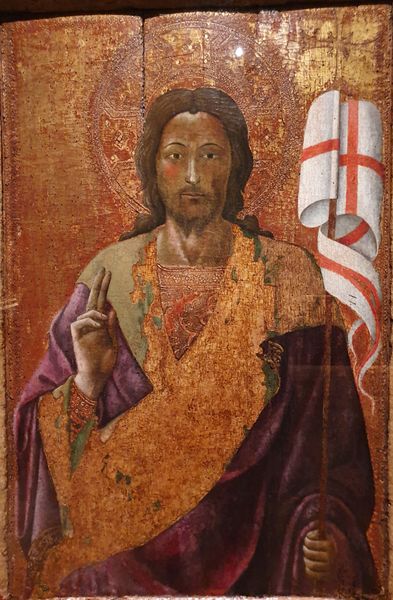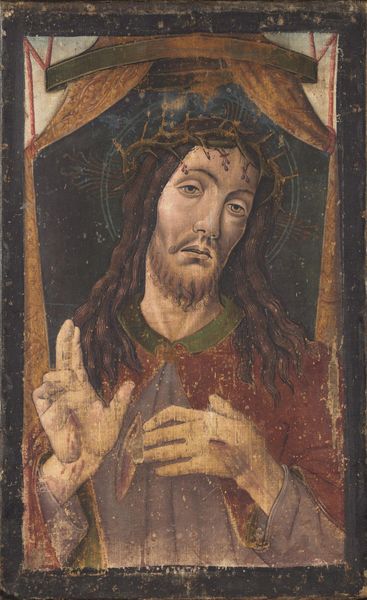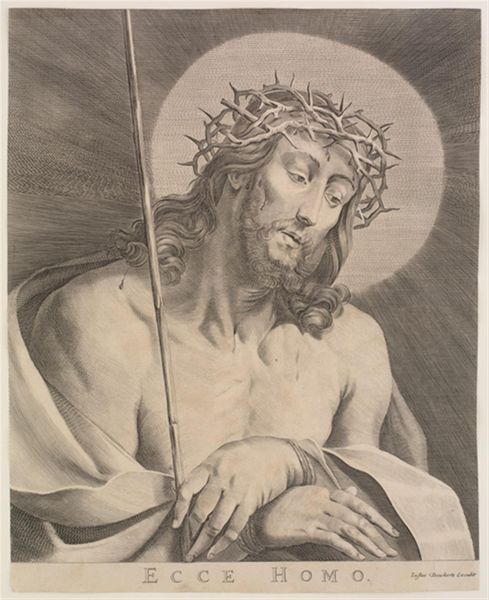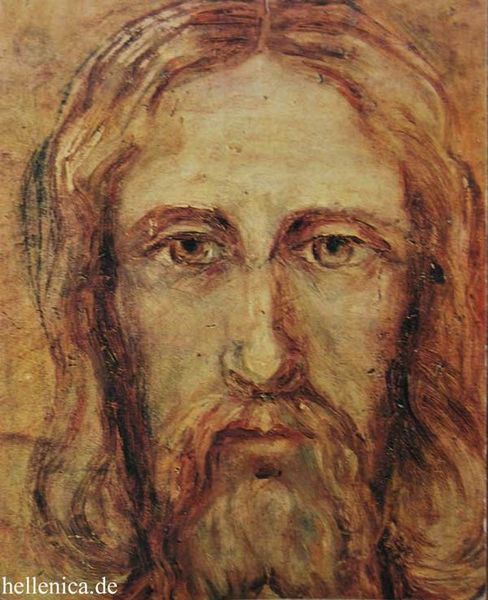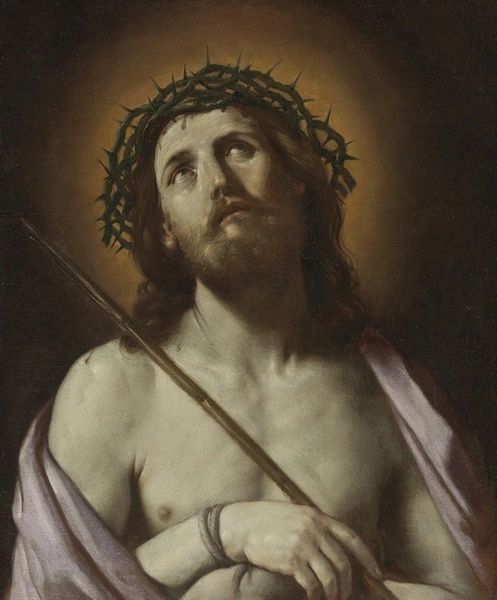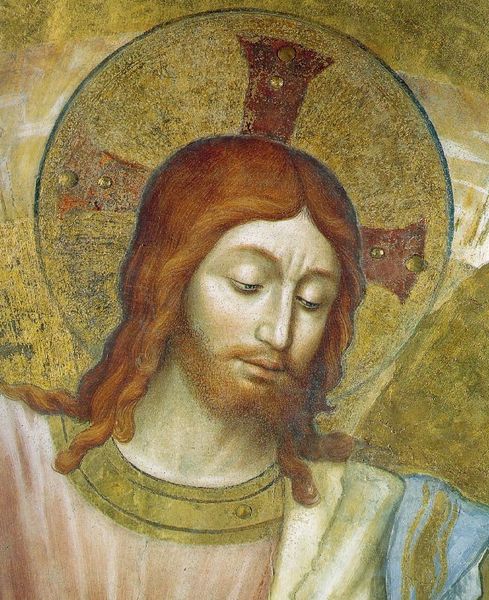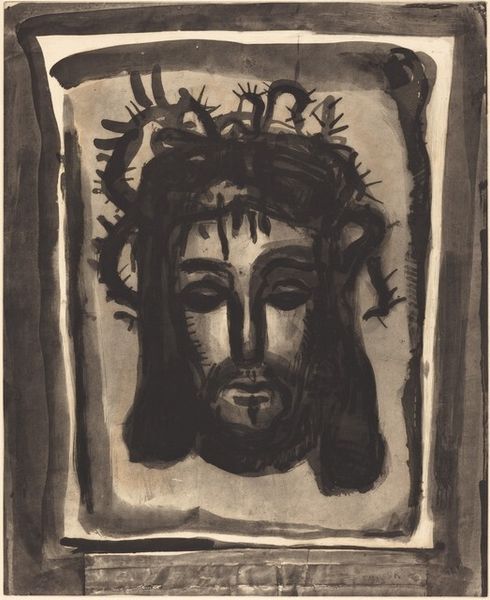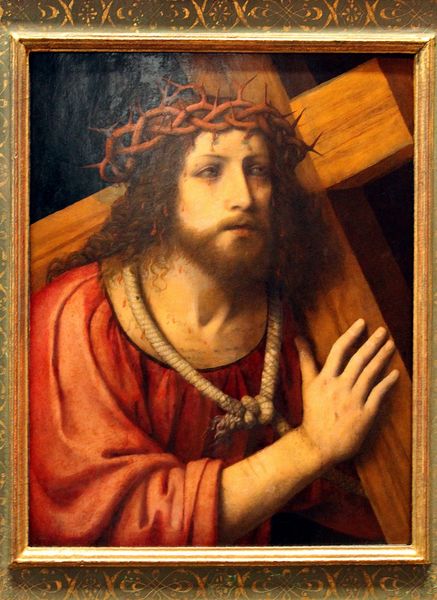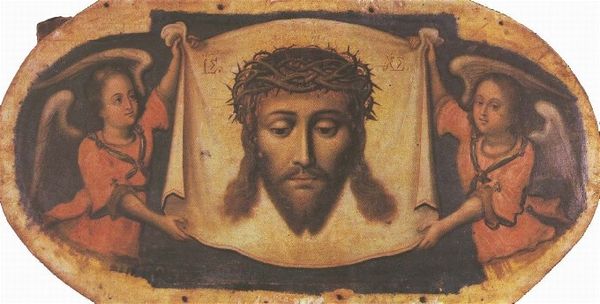
oil-paint
#
oil-paint
#
oil painting
#
neo expressionist
#
expressionism
#
history-painting
#
realism
Dimensions: 52 x 44 cm
Copyright: Public domain
Editor: This is Ilya Repin’s "Jesus in a crown of thorns", painted in 1913, using oil paints. The raw texture of the paint is what strikes me most; it feels almost brutal. How would you interpret this piece? Curator: The aggressive handling of the oil paint speaks volumes. Consider the material cost and the availability of pigments in pre-revolutionary Russia, 1913. Repin isn’t just depicting Jesus; he’s also making a statement about labour, resources, and the very act of creation. The blurring of realism with expressionism through material transformation reflects Repin's changing historical circumstances, which were full of turbulence and precarity, challenging notions of conventional beauty, craftmanship, and established religion. Editor: So you’re saying the roughness is deliberate, highlighting the effort and materials, a kind of labor made visible? The cost of red pigment and other materials can explain the social message that is often overlooked in figurative or religious paintings. Curator: Precisely! How else might the societal turbulence Repin lived through, manifest through his art practice? Editor: I guess the religious narrative adds another layer, pointing to ideas about human suffering. How are those social-economic structures intertwined in these symbolic layers? Curator: It challenges us to see the 'divine' suffering through a very material, human lens. Religious narrative acts almost like raw material, transformed through labour and means of production. This act almost mirrors spiritual and earthly transformation. Editor: That gives me a lot to think about - seeing beyond the religious figure to the historical context and artistic labor behind it. Curator: Exactly, it brings to question the intersection between labor and representation and the making of this religious painting, not just the art itself!
Comments
No comments
Be the first to comment and join the conversation on the ultimate creative platform.
